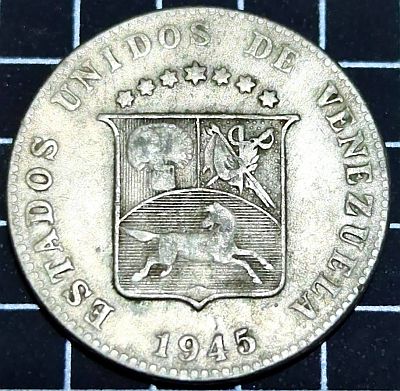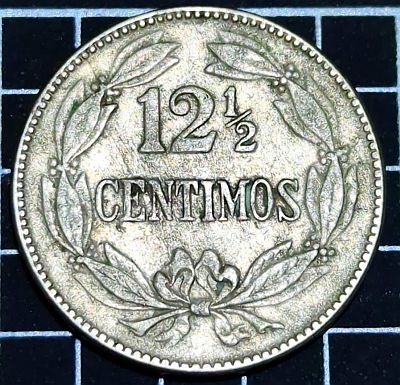A coin with an unusual denomination from the northernmost country of South America.
Venezuela
The Bolivarian Republic of Venezuela is a Latin American nation with a culturally and ethnically rich and diverse population and enormous natural resources. Venezuela is in the northern part of South America, on the Caribbean Sea. Bordered by Colombia, Brazil and Guyana, Trinidad & Tobago are just off the coast. One of Latin America’s most urbanized countries, with most of its 29-million-strong population living in cities in the north of the country. Nowadays, it is the continent’s largest exporter of oil and home to its largest oil reserve. Oil makes up over half of the GDP.
One of the world’s most biodiverse nations, Venezuela is a wilderness haven, home to some of the most splendid highlights in all of Latin America, including Angel Falls, the world’s highest waterfalls.
Venezuela has been inhabited for over 10,000 years. Small tribes existed long before the start of agriculture and the creation of the first year-round settlements, which are believed to have sprung up nearly 2000 years ago. Highlands tribes developed terraced farming, while seaside tribes lived in stilt housing and relied on fishing.
In 1498, Christopher Columbus initially thought he had landed on another island, before realising he had found the New World mainland. The country was named a year later when Italian explorer Amerigo Vespucci saw the houses on stilts. They reminded the Italian of Venice, and he renamed the native settlement Venezuela or ‘Little Venice’. Initially the Spanish used Venezuela as a coastal protector of the imperial fleet as it ferried plundered gold and treasures from the other new colonies. As in other colonies, however, the Spanish gathered natives as slaves, which led to fierce resistance and warfare, and decimated the native population.
Venezuela’s biggest claim to fame, was that it was the birthplace of Simon Bolivar, the revolutionary leader. He is credited with hastening the end of Spanish rule in the New World. Bolivar led revolutions to secure the independence of not only Venezuela and the countries which then made up the Viceroyalty of New Granada (Venezuela, Colombia, Panama and Ecuador) but also guided the liberation of colonies like Peru and Bolivia, the latter named in his honour.
Venezuela gained independence from Spain in 1821, although it did not have a democratic election until 1947. For much of the period between, the country was under the control of various regimes and military governments. In 1945, when today’s coin was minted, a coup established the first civilian government after years of military rule. In 1948, only eight months after the first elections in 1947, the democratically elected government was overthrown by a military coup.
Obverse

The obverse of the coin features the coat of arms, with the country name above and year below. The country name at the time of this coin was “Estados Unidos de Venezuela”, which translates as “The United States of Venezuela”.
The coat of arms features a shield in three parts in the colours of the national flag: Yellow (right), Blue (below) and Red (left). The flag features those colours in three stripes, top to bottom.
The red displays wheat, which represents the union of the 20 States of the Republic existing at the time, and the wealth of the Nation. The yellow depicts weapons (a sword, a sabre, and three lances) and two National Flags, which are tied by a branch of laurel, as a symbol of triumph in war. The blue shows a wild white horse running free, an emblem of independence and freedom.
Above the shield on the coin are seven stars. The stars are in an arc, the same as feature in the centre of the flag. The white stars represent the seven provinces of Venezuela that united in the war of independence.
Reverse

The reverse features the value, 12 1/2 Centimos, within a wreath. It is that value which is one of the most striking things about this coin, at least for someone not used to Venezuelan coins.
The currency from 1879 was the Bolivar, made up of 100 Centimos. The Venezuelan Coinage Act of 1879 established the Bolivar as the official currency, one locha was equivalent in value to 1⁄8 bolívar, 2+1⁄2 centavos and 1⁄4 real.
One tricky aspect of the coin was that it was the only fractional centavos coin. 2 1/2 Centimos coins had been issued in the 1870s, but after the Bolivar was introduced (in 1879), the smallest coin issued was 5 Centimos. In the 1970s the coin was replaced with the 10 Centimos coin, although a new 12 1/2 Centimos coin was issued in 2007.
A search for the value “12 1/2” yields only 23 results across all types of coins Numista. Six of those are from Venezuela where the coin was issued at various times between 1896 and 2007.


Leave a Reply